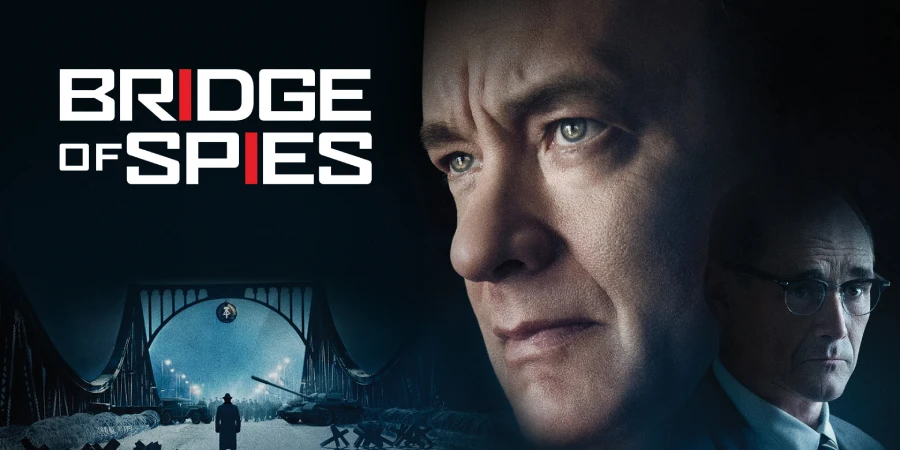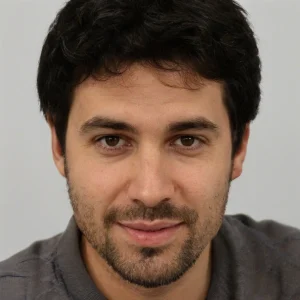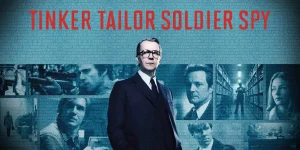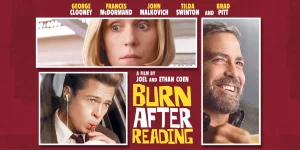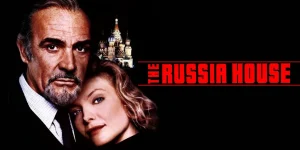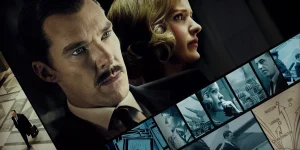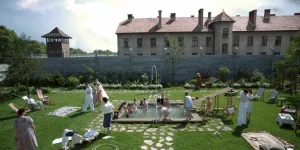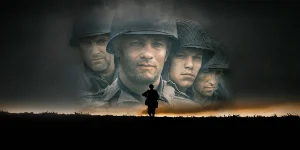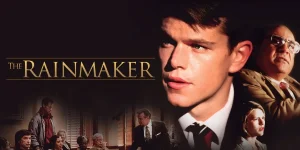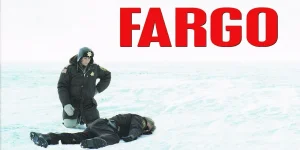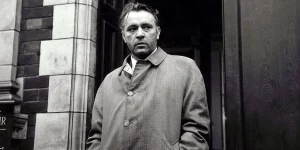Steven Spielberg’s Bridge of Spies (2015) is a Cold War thriller that combines espionage, courtroom drama, and moral dilemmas. Written by Matt Charman and the Coen brothers, it tells the real-life story of James B. Donovan, an insurance lawyer who suddenly finds himself at the heart of international intrigue.
Table of Contents
ToggleDetailed Summary
The Arrest of Rudolf Abel
The film begins in Brooklyn, 1957. Rudolf Abel (Mark Rylance), a quiet man living alone, is arrested by the FBI under suspicion of being a Soviet spy. Abel is calm, collected, and seems more worried about his painting supplies than the charges.
Donovan’s Appointment as Defense Attorney
James B. Donovan (Tom Hanks), a respected insurance lawyer with a background in law, is chosen—reluctantly at first—to defend Abel in court. Donovan knows the case is stacked against him, but he insists on giving Abel a fair trial, believing that the integrity of the American legal system is at stake. His dedication earns him both praise and hostility, as many Americans see Abel as the enemy.
Captured Pilots and Rising Tensions
Meanwhile, American pilot Francis Gary Powers (Austin Stowell) is shot down while flying a U-2 spy plane over Soviet territory. He is captured and held as a prisoner in the USSR. Around the same time, American student Frederic Pryor (Will Rogers) is arrested in East Germany. Suddenly, Donovan finds himself in the middle of high-stakes Cold War negotiations.
The Negotiations in Berlin
Donovan is approached to negotiate a prisoner exchange: Abel for Powers. Things grow complicated when Donovan insists that Pryor, the innocent student, should also be included in the deal. He travels to Berlin in the dead of winter, moving between Soviet and East German officials. The famous Berlin Wall is being completed as these talks take place, and Pryor is caught in the tightening grip of East German authority.
Movie Ending
The climax occurs on the Glienicke Bridge (nicknamed the “Bridge of Spies”), a border crossing between Potsdam (controlled by the Soviets) and West Berlin. Donovan arranges a tense trade: Abel for Powers. Abel remains calm, stoic, and resigned to his fate, while Powers is nervous and unsure how he will be received back home. At the same time, Pryor is supposed to be released at Checkpoint Charlie.
Initially, things don’t go smoothly. The East Germans delay Pryor’s release, hoping to gain legitimacy as an independent negotiating power. Donovan, however, refuses to go through with the Abel-Powers trade until Pryor is also freed. After long hours of tension, both exchanges occur almost simultaneously. Powers crosses the bridge; Pryor walks through the checkpoint.
Donovan, exhausted but triumphant, returns home to New York. The world praises Powers as a hero, but Donovan’s role is kept largely secret. Only his family realizes the enormity of what he has accomplished. In a final scene, Abel fades into the distance, his fate in the Soviet Union left uncertain, while Donovan finally finds rest in his home, having defended justice against political pressure.
Are There Post-Credits Scenes?
No. Bridge of Spies does not feature any post-credits or mid-credits scenes. Once the movie ends, the story is complete, closing with historical notes about Donovan’s later achievements.
Type of Movie
This film is a historical drama / espionage thriller. It blends tense spy negotiations with courtroom drama, while also exploring themes of morality, patriotism, and humanity during the Cold War.
Cast
- Tom Hanks as James B. Donovan
- Mark Rylance as Rudolf Abel
- Amy Ryan as Mary Donovan
- Alan Alda as Thomas Watters
- Austin Stowell as Francis Gary Powers
- Will Rogers as Frederic Pryor
- Sebastian Koch as Wolfgang Vogel
Film Music and Composer
The score was composed by Thomas Newman, as longtime Spielberg collaborator John Williams was unavailable at the time. Newman’s music emphasizes tension, melancholy, and the human cost of espionage, perfectly matching the Cold War atmosphere.
Filming Locations
- Glienicke Bridge, Berlin/Potsdam: The actual site of Cold War spy exchanges, recreated for the film.
- Berlin, Germany: Various streets and locations were used to depict East and West Berlin.
- Babelsberg Studio, Germany: Key indoor sets.
- New York City: Courtroom and Brooklyn street scenes.
The choice of real Cold War locations adds authenticity and historical weight.
Awards and Nominations
- Academy Award: Best Supporting Actor (Mark Rylance, winner)
- Nominated for: Best Picture, Best Original Screenplay, Best Production Design, Best Original Score, Best Sound Mixing
- BAFTA Awards: Won Best Supporting Actor (Mark Rylance)
Behind the Scenes Insights
- Spielberg originally wanted John Williams to compose the score, but Thomas Newman stepped in due to scheduling conflicts.
- Mark Rylance’s calm, almost minimalist performance was so striking that it became one of the most praised aspects of the film.
- The Glienicke Bridge sequence was filmed in the real location, but with strict limitations due to modern traffic.
- Spielberg insisted on historically accurate details, down to the clothes worn by extras in Berlin.
Inspirations and References
The film is based on real historical events, particularly the true story of James B. Donovan’s negotiations during the Cold War. It also draws from the memoirs of Donovan and accounts of Gary Powers’ U-2 incident.
Alternate Endings and Deleted Scenes
No alternate endings have been confirmed. However, some scenes of Donovan’s home life were trimmed to tighten pacing. Spielberg chose to end the film with Donovan resting at home, emphasizing personal resolution over political spectacle.
Book Adaptations and Differences
The film draws inspiration from Donovan’s memoir Strangers on a Bridge (1964). While largely faithful, Spielberg condenses events for cinematic impact, particularly around Pryor’s inclusion in the negotiations, which in reality involved more drawn-out diplomacy.
Memorable Scenes and Quotes
Key Scenes
- Donovan arguing in court that Abel deserves a fair trial.
- The U-2 plane being shot down, filmed with gripping intensity.
- The tense final exchange on Glienicke Bridge.
- Donovan returning home silently, exhausted but proud.
Iconic Quotes
- Abel: “Would it help?” (when asked if he’s worried about his fate).
- Donovan: “Every person matters.”
- Abel (to Donovan): “You remind me of a man I met in my town as a boy… the standing man.”
Easter Eggs and Hidden Details
- The “standing man” story told by Abel is based on a real anecdote about Soviet resilience.
- Spielberg pays homage to Cold War spy films with subtle framing choices in Berlin sequences.
- Donovan’s subway ride home mirrors an earlier subway scene, showing the public’s changing perception of him.
Trivia
- Spielberg said he was inspired by Frank Capra films when shaping Donovan’s character as an “ordinary man in extraordinary times.”
- This was the first Spielberg film in 14 years not scored by John Williams.
- Mark Rylance prepared for his role by studying Abel’s real paintings.
- The actual Glienicke Bridge has been nicknamed the “Bridge of Spies” since the 1960s.
Why Watch?
If you enjoy smart, dialogue-driven thrillers that mix history with moral dilemmas, this film is a must. It’s not just about spies—it’s about one man’s courage to do the right thing when the world demands otherwise. Spielberg balances suspense with humanity, making it both educational and emotionally gripping.

